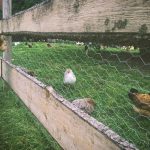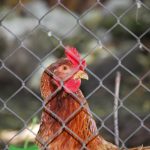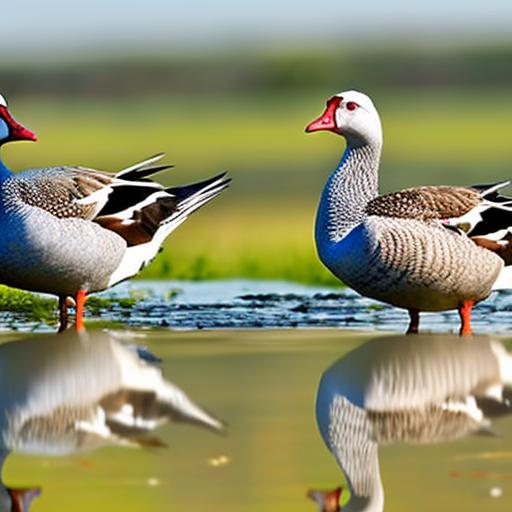As the temperatures drop and the days grow shorter, it is crucial for chicken owners to pay special attention to the bedding in their coop. Bedding serves several important purposes for chickens in the winter months. Firstly, it provides insulation and warmth, helping to keep the birds comfortable and healthy during the cold season. Additionally, bedding helps to absorb moisture and odors, creating a clean and dry environment for the chickens to live in. Proper bedding also plays a role in preventing frostbite and other cold-related health issues in chickens. Therefore, choosing the right bedding and maintaining it properly is essential for the well-being of your flock during the winter.
In addition to providing warmth and insulation, bedding also serves as a cushioning material for chickens to rest on. This is especially important during the winter when chickens may spend more time inside the coop due to the cold weather. The right bedding can help prevent injuries and provide a comfortable resting place for the birds. Furthermore, bedding can also aid in waste management by absorbing droppings and other organic matter, making it easier to keep the coop clean and hygienic. Overall, the importance of bedding for chickens in winter cannot be overstated, and choosing the right type of bedding is crucial for ensuring the health and well-being of your flock during the colder months.
Table of Contents
- 1 Straw: A Traditional and Effective Bedding Option
- 2 Pine Shavings: A Popular Choice for Coop Bedding
- 3 Hemp Bedding: A Sustainable and Insulating Option for Chickens
- 4 Deep Litter Method: Keeping Chickens Warm and Cozy with Composting Bedding
- 5 Heating Options for Extreme Cold Weather
- 6 Tips for Maintaining Clean and Dry Bedding in Winter
Straw: A Traditional and Effective Bedding Option
Straw has long been a popular choice for chicken coop bedding, especially in colder climates. It is an effective insulator, providing warmth and comfort for chickens during the winter months. Straw is also highly absorbent, making it an excellent choice for managing moisture and odors in the coop. Additionally, straw is readily available and relatively inexpensive, making it a practical choice for many chicken owners. When using straw as bedding, it is important to regularly fluff and turn it to prevent compaction and ensure that it continues to provide adequate insulation and absorbency for the chickens.
Another benefit of using straw as bedding is its versatility. It can be used in nesting boxes, on the floor of the coop, and even in outdoor runs to provide a comfortable and clean environment for chickens. However, it is important to note that straw can be a bit messy and may require more frequent cleaning and replacement compared to other bedding options. Despite this, many chicken owners continue to choose straw as their preferred bedding option for its effectiveness in keeping chickens warm and comfortable during the winter.
Pine Shavings: A Popular Choice for Coop Bedding
Pine shavings are another popular choice for chicken coop bedding, particularly in areas where straw may be less readily available. Pine shavings are highly absorbent and have natural odor-control properties, making them an excellent choice for managing moisture and keeping the coop clean and dry during the winter months. Additionally, pine shavings are easy to work with and can be quickly and easily spread throughout the coop to provide a comfortable and insulating bedding layer for chickens.
One of the key benefits of using pine shavings as bedding is their low dust content, which can be beneficial for both chickens and their owners. Dusty bedding can irritate the respiratory systems of chickens and contribute to poor air quality in the coop. Pine shavings produce minimal dust, making them a healthier option for both chickens and their caretakers. Furthermore, pine shavings are relatively affordable and widely available, making them a convenient choice for many chicken owners. Overall, pine shavings are a popular choice for coop bedding due to their absorbency, odor-control properties, low dust content, and ease of use.
Hemp Bedding: A Sustainable and Insulating Option for Chickens
Hemp bedding is gaining popularity as a sustainable and effective option for chicken coop bedding, particularly in colder climates. Hemp is highly absorbent, providing excellent moisture management in the coop during the winter months. It also has natural insulating properties, helping to keep chickens warm and comfortable even in extreme cold weather. Additionally, hemp bedding is biodegradable and compostable, making it an environmentally friendly choice for chicken owners who are conscious of their ecological footprint.
One of the key benefits of using hemp bedding is its durability. Hemp is known for being long-lasting and resistant to decomposition, meaning that it can provide effective insulation and moisture management for an extended period of time. This can be particularly beneficial during the winter when frequent cleaning and replacement of bedding may be more challenging due to the cold weather. Furthermore, hemp bedding is naturally low in dust, making it a healthier option for both chickens and their caretakers. While hemp bedding may be slightly more expensive than other options, its sustainability, durability, and insulating properties make it an attractive choice for many chicken owners looking to provide the best possible environment for their flock during the winter.
Deep Litter Method: Keeping Chickens Warm and Cozy with Composting Bedding
The deep litter method is a popular approach to coop bedding that involves allowing organic matter such as straw, pine shavings, or hemp bedding to accumulate in the coop over time. As the bedding materials break down, they generate heat through the process of composting, helping to keep the coop warm and cozy during the winter months. This method not only provides insulation but also reduces the need for frequent cleaning and replacement of bedding, making it a convenient option for many chicken owners.
In addition to providing warmth, the deep litter method also offers environmental benefits. The composting process helps to break down waste materials and reduce odors in the coop, creating a healthier environment for both chickens and their caretakers. Furthermore, the composted bedding can be used as a nutrient-rich soil amendment for gardens or landscaping, adding an extra layer of sustainability to this bedding method. While the deep litter method requires regular maintenance such as turning and fluffing the bedding to promote composting and prevent odors, many chicken owners find it to be an effective and efficient way to keep their flock warm and comfortable during the winter.
Heating Options for Extreme Cold Weather
In extreme cold weather conditions, some chicken owners may consider using supplemental heating in the coop to ensure that their flock stays warm and healthy. There are several heating options available, including heat lamps, radiant heaters, and heated pads or perches. Heat lamps are a popular choice for providing warmth in the coop, but they must be used with caution to prevent fire hazards or injuries to chickens. Radiant heaters are another option that provides gentle warmth without the risk of fire associated with heat lamps. Heated pads or perches can also be used to provide a warm resting spot for chickens without heating the entire coop.
While supplemental heating can be beneficial in extreme cold weather, it is important to use these options carefully and responsibly. Improper use of heating devices can pose fire hazards or cause injuries to chickens if they come into direct contact with hot surfaces. Additionally, excessive heat can disrupt natural behaviors such as molting or egg laying in chickens. Therefore, it is important to carefully monitor temperature levels in the coop and provide supplemental heating only when necessary to ensure the health and well-being of your flock during extreme cold weather.
Tips for Maintaining Clean and Dry Bedding in Winter
Regardless of the type of bedding you choose for your chicken coop in winter, proper maintenance is essential for keeping it clean and dry. Regularly fluffing and turning bedding materials can help prevent compaction and promote airflow, reducing moisture buildup and odors in the coop. Additionally, removing wet or soiled bedding promptly can help prevent mold growth and maintain a healthy environment for your flock.
In addition to regular maintenance, providing adequate ventilation in the coop is crucial for managing moisture levels and preventing condensation that can lead to damp bedding. However, it is important to balance ventilation with insulation to ensure that chickens stay warm without being exposed to drafts or excessive cold air. Finally, using absorbent materials such as straw, pine shavings, or hemp bedding can help manage moisture effectively and keep your coop clean and dry throughout the winter months.
In conclusion, choosing the right bedding for your chicken coop in winter is essential for ensuring the health and well-being of your flock during the colder months. Whether you opt for traditional options such as straw or pine shavings or explore sustainable alternatives like hemp bedding or the deep litter method, proper maintenance is key to keeping your coop clean and dry throughout winter. By providing adequate insulation, managing moisture effectively, and considering supplemental heating options when necessary, you can create a warm and comfortable environment for your chickens even in extreme cold weather conditions. With careful consideration of your flock’s needs and diligent maintenance practices, you can ensure that your chickens stay happy and healthy throughout the winter season.
Meet Walter, the feathered-friend fanatic of Florida! Nestled in the sunshine state, Walter struts through life with his feathered companions, clucking his way to happiness. With a coop that’s fancier than a five-star hotel, he’s the Don Juan of the chicken world. When he’s not teaching his hens to do the cha-cha, you’ll find him in a heated debate with his prized rooster, Sir Clucks-a-Lot. Walter’s poultry passion is no yolk; he’s the sunny-side-up guy you never knew you needed in your flock of friends!







